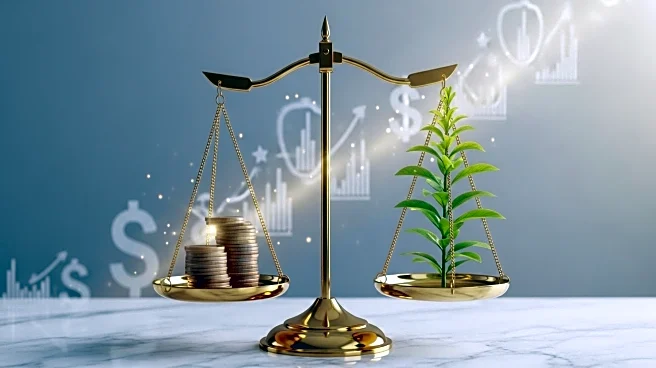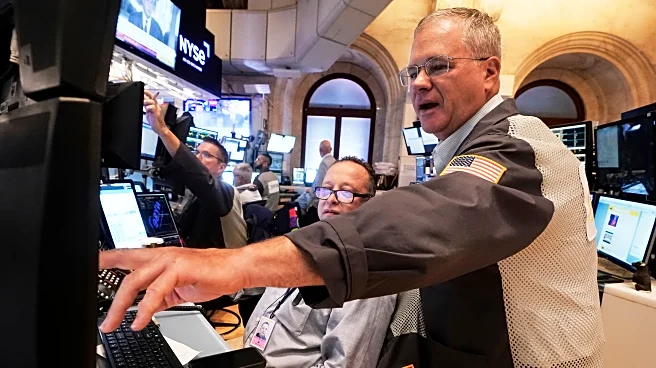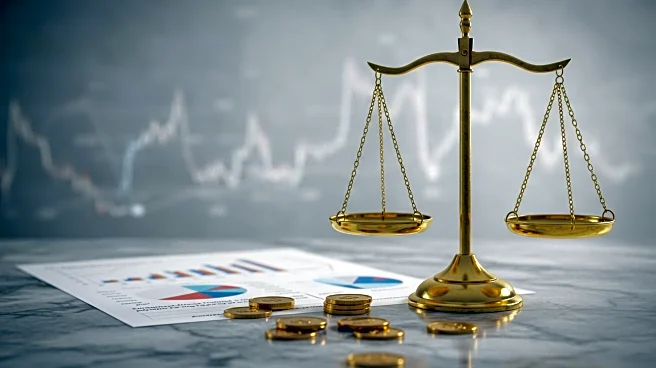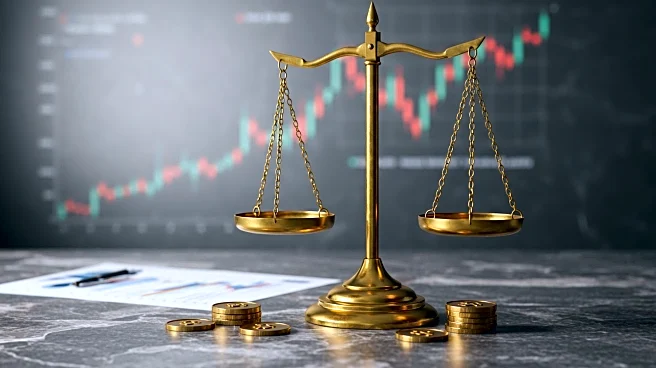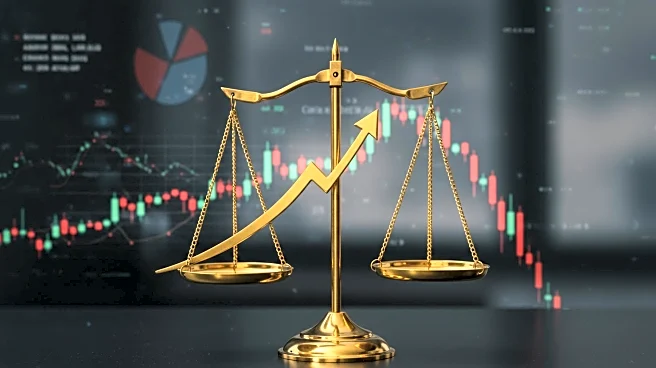What's Happening?
The U.S. economy has shown unexpected growth as President Trump's tariffs have taken effect, according to recent federal data. The U.S. gross domestic product (GDP) increased at an annualized rate of 3% over the three months ending in June, a significant rise from a contraction of -0.5% in the first quarter of 2025. This growth suggests that the economy has managed to avoid a significant slowdown due to tariffs, with consumer spending playing a crucial role in this economic surge. However, the tariffs have complicated the GDP findings, as the formula used by the government subtracts imports to exclude foreign production. This has led to fluctuations in GDP readings, with a decrease in imports potentially inflating the second-quarter GDP figure.
Why It's Important?
The growth of the U.S. economy despite the imposition of tariffs is significant as it indicates resilience in consumer spending, which accounts for a large portion of economic activity. The unemployment rate remains low, and job growth is steady, although it has slowed from previous highs. Inflation has increased over the past two months but remains below levels seen at the start of President Trump's term. The economic expansion eases pressure on the Federal Reserve to lower interest rates, as robust growth suggests that consumers and businesses are not deterred by high borrowing costs. However, the tariffs have raised concerns about potential long-term impacts on consumer sentiment and spending.
What's Next?
The Federal Reserve is set to announce its latest decision on interest rates, with a majority of investors expecting rates to remain steady. The Fed has adopted a cautious approach, monitoring the effects of the tariffs on the economy. If economic growth slows, the Fed may consider lowering interest rates to stimulate performance. Meanwhile, consumer sentiment has improved as some tariffs have been rolled back, indicating potential stability in consumer spending moving forward.
